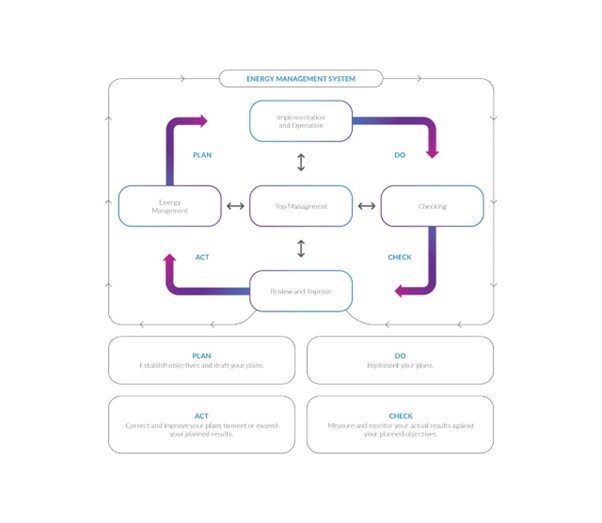With the current energy crisis and price increases happening worldwide, now is a perfect time to put out content on technology-based energy solutions. Matthew Margetts explains how businesses can save money and reduce energy consumption.
Rising domestic energy bills have been in the news a lot lately, but there’s been less coverage of what these rising energy costs mean for businesses. Although the energy price cap for households has recently been confirmed, there has been no further clarity about the support being offered for businesses. Ofgem said that details of ‘equivalent support’ would be published “in due course” and that more focused support will be offered for particularly vulnerable or energy-intensive industries. In the meantime, many businesses across the UK are facing a five-fold increase in energy costs.
While businesses are dealing with the impact of high energy costs, they’re also tasked with achieving compliance with energy legislation as part of their overall strategy to demonstrate their commitment to environmental responsibility and reduce their carbon footprints.
So, with energy costs unlikely to come down anytime soon and sustainability strategies a top priority on the corporate agenda, efficient energy management is a must-have for all organisations. Through the application of an ISO 50001 energy management system, organisations of any size and sector can identify potential energy efficiency improvements, decrease energy costs, reduce their environmental impact, unlock financial savings and improve their brand reputation.
What is ISO 50001 certification?
ISO 50001 is the international Energy Management Systems (EnMS) standard. It is applicable to guiding any company, organisation or institution (regardless of the size, industry or location) to establish, implement, maintain and improve a more efficient energy consumption model and manage energy use and procurement. The aim is to enable organisations to take a systematic approach to reduce the adverse impact on the environment and achieve continual improvement of energy performance, energy efficiency and energy conservation.
ISO 50001 is based on the management system model of continual improvement which is also used for other well-known standards such as ISO 9001 or ISO 14001.
Providing tried and tested best practice methods, ISO 50001 can help your organisation implement energy management improvements to drive innovation, growth and profitability—much like an external consultant, but without the hefty price tag.
The benefits of improving energy efficiency
ISO 50001 Energy Management uses the development of an energy management system to tackle climate change and conserve resources by using energy more efficiently. As reducing environmental impact and energy consumption costs becomes more of a priority for businesses, ISO 50001 shows you how to create and follow a policy to manage energy supply and energy uses and consumption. This includes measurement, documentation, and reporting, as well as design and procurement practices for energy-using equipment, systems, processes and personnel.
The standard provides a framework of requirements for organisations to:
* Reduce energy consumption and energy bills
* Improve decision-making around energy use
* Gain tender opportunities by certifying green compliance and credentials
* Better manage the risks associated with future energy supply
* Develop and continually review a policy for more efficient use of energy
* Understand and meet statutory requirements
* Use and measure data to better understand and make decisions about energy use
* Increase energy efficiency performance, productivity and compliance
- Build and support an organisation’s reputation
* Minimise the impact of greenhouse gases and carbon emissions
* Encourage employees at all levels to work efficiently and save energy
Energy monitoring holds the key
The Plan-Do-Check-Act (PDCA) cycle is the operating principle of ISO management standards. By following this cycle, you can effectively manage and continually improve your organisation’s effectiveness.
Monitoring and controlling the consumption of energy is crucial, as the analysis of an organisation’s energy consumption data makes it possible to validate (or invalidate) the saving activities identified, and to keep an optimised level of energy performance and control over the long-term. Monitoring power and energy usage in a facility can help identify hidden issues that affect both operational and environmental quality, pinpoint the reason for higher than desired energy costs, and reveal the causes of equipment repair and replacement.
Smarter Technologies has designed a smart energy monitoring solution to fit the ISO 50001 framework, enabling organisations to easily formulate their own policies and comply with the requirements of the certification. Through mandated measurement and monitoring of your energy use, ISO 50001 will help you reduce costs and improve energy performance as well as meet environmental and carbon reduction targets.
Matthew Margetts is a Director at Smarter Technologies.
 Engineer News Network The ultimate online news and information resource for today’s engineer
Engineer News Network The ultimate online news and information resource for today’s engineer






